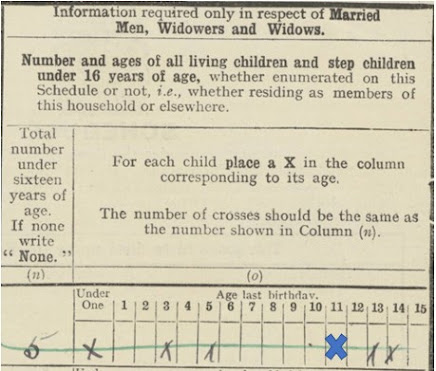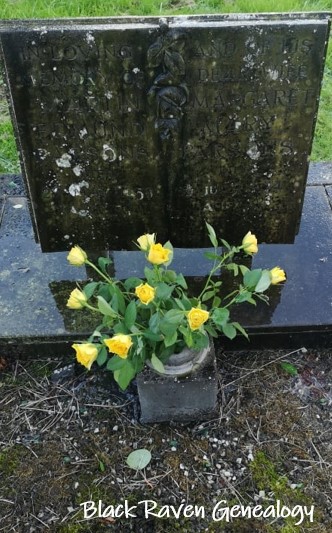This is an update of a post originally published in December 2021.
Charles Francis O'Neill is my longest standing and most frustrating genealogy brick wall. He was named as my Dad's grandfather at the time of Granny's baptism in 1895. The earliest record of his existence, so far found, was dated a mere twenty one years earlier, 19 April 1874, when he married [Mary] Agnes Donovan in the Pro-Cathedral in Dublin city. There, his parents were named as John and Margaret O'Neill of Dominick Street, Dublin.
The goal is to obtain every surviving piece of paper mentioning his name and perhaps one piece might prove be the key that opens the window to his past.
All records relating to Charles' death have been examined. First, his death certificate confirmed he was a law clerk by occupation, and was forty-six years old when he died at Sir Patrick Dun's Hospital, Dublin, on 23 April 1895. A copy of his admission record at Sir Patrick Dun's was requested, but it transpired the records had a five-year gap spanning the date of my great-grandfather's death. He was buried in a poor-ground plot at Glasnevin Cemetery, not in a family grave - yet another dead end. Pardon the pun!
But the burial register did point to the undertakers being at 30 Lombard Street, which after some investigation turned out to have been the address of J & C Nicholls', funeral directors.
The historic records of J & C Nicholl's were traced to the National Archives, and now, thanks to my friend, the Irish genealogist Claire Bradley, who recently visited the Archives, I have a copy of the relevant entry from the Day Book. If I'm reading it correctly, Charles' funeral cortege included the hearse, a horse-drawn coach and two horse-drawn carriages.
Can you picture his funeral procession? It was led by a black hearse, harnessed by four black horses, their coats gleaming, their long manes flowing, perhaps each topped with a tall head plume? Can you hear the thunder of their hooves and the rattle of the carriage wheels as they all made their way across the city, and out to Glasnevin?
My poor great-grandmother! Her seven surviving children ranged in age from sixteen years to only three months old. How would they all survive? I can only imagine the shock she felt at losing her husband and her fear for their future. Did she follow the hearse in one of the carriages? Or, was the funeral a male-only affair?
Also of interest, the record shows the funeral expenses were paid by a Mr. Reeves of 51 Merrion Square. Thom's Directory of 1894 places S.S. and E. Reeves & Sons, solicitors for the Scottish Provident Institution, as well as Richard S. Reeves, solicitor and Robert Reeves, solicitor, at 51 Merrion Square. Maybe 'Mr. Reeves' was Charles O'Neill's employer. We know Charles was a law clerk. I wonder how my great-grandfather landed a job at such a prestigious law-firm. One thing is for sure, he didn't just walk in off the street, he must have had 'connections', probably family connections.*
* Update 1: Another possibility, and probably the more likely scenario, is that Charles had an insurance policy with the Scottish Provident Institution, who paid the undertaker via its solicitor. (Thanks to my friend Paddy Waldron for this suggestion).
So where to now? Well, I still need to track down the baptism records for some of the younger children. Catholic records show the names of the Godparents, and may contain further clues.
Update 2: Recently I heard from the great-grandson of Thomas Turley, who confirmed Thomas was employed as a clerk in the Solicitor-Generals' Office at Dublin Castle, i.e. the historical seat of British rule in Ireland. We have already concluded Thomas and George Turley may have been colleagues of my Charles O'Neill in Dublin, all three friends having been law-clerks by profession - see here. It goes without saying, perhaps Charles worked in the Solicitor-Generals' Office too. Now wondering if such employee records exist and survive.
Someday, all these little pieces of diverse information might help me recognise Charles' origins.
Main sources:
i. Charles O'Neill, 1895, in the burial register for Glasnevin Cemetery, Dublin Cemeteries Trust.
ii. Charles O'Neill, 1895, in the Day Books for J & C Nicholl's (DUB 19/1/3, Day Book no. 15), National Archives of Ireland.
iii. Thom's Dublin Street Directory, 1894, accessed Ancestry.
The goal is to obtain every surviving piece of paper mentioning his name and perhaps one piece might prove be the key that opens the window to his past.
All records relating to Charles' death have been examined. First, his death certificate confirmed he was a law clerk by occupation, and was forty-six years old when he died at Sir Patrick Dun's Hospital, Dublin, on 23 April 1895. A copy of his admission record at Sir Patrick Dun's was requested, but it transpired the records had a five-year gap spanning the date of my great-grandfather's death. He was buried in a poor-ground plot at Glasnevin Cemetery, not in a family grave - yet another dead end. Pardon the pun!
But the burial register did point to the undertakers being at 30 Lombard Street, which after some investigation turned out to have been the address of J & C Nicholls', funeral directors.
 |
| 1895, Burial Charles O'Neill, Glasnevin Cemetery |
The historic records of J & C Nicholl's were traced to the National Archives, and now, thanks to my friend, the Irish genealogist Claire Bradley, who recently visited the Archives, I have a copy of the relevant entry from the Day Book. If I'm reading it correctly, Charles' funeral cortege included the hearse, a horse-drawn coach and two horse-drawn carriages.
Can you picture his funeral procession? It was led by a black hearse, harnessed by four black horses, their coats gleaming, their long manes flowing, perhaps each topped with a tall head plume? Can you hear the thunder of their hooves and the rattle of the carriage wheels as they all made their way across the city, and out to Glasnevin?
My poor great-grandmother! Her seven surviving children ranged in age from sixteen years to only three months old. How would they all survive? I can only imagine the shock she felt at losing her husband and her fear for their future. Did she follow the hearse in one of the carriages? Or, was the funeral a male-only affair?
 |
| 1895, Charles O'Neill, J & C Nicholls, Funeral Directors, Day Book |
Also of interest, the record shows the funeral expenses were paid by a Mr. Reeves of 51 Merrion Square. Thom's Directory of 1894 places S.S. and E. Reeves & Sons, solicitors for the Scottish Provident Institution, as well as Richard S. Reeves, solicitor and Robert Reeves, solicitor, at 51 Merrion Square. Maybe 'Mr. Reeves' was Charles O'Neill's employer. We know Charles was a law clerk. I wonder how my great-grandfather landed a job at such a prestigious law-firm. One thing is for sure, he didn't just walk in off the street, he must have had 'connections', probably family connections.*
* Update 1: Another possibility, and probably the more likely scenario, is that Charles had an insurance policy with the Scottish Provident Institution, who paid the undertaker via its solicitor. (Thanks to my friend Paddy Waldron for this suggestion).
 |
| Thom's, 1894 |
So where to now? Well, I still need to track down the baptism records for some of the younger children. Catholic records show the names of the Godparents, and may contain further clues.
Update 2: Recently I heard from the great-grandson of Thomas Turley, who confirmed Thomas was employed as a clerk in the Solicitor-Generals' Office at Dublin Castle, i.e. the historical seat of British rule in Ireland. We have already concluded Thomas and George Turley may have been colleagues of my Charles O'Neill in Dublin, all three friends having been law-clerks by profession - see here. It goes without saying, perhaps Charles worked in the Solicitor-Generals' Office too. Now wondering if such employee records exist and survive.
Someday, all these little pieces of diverse information might help me recognise Charles' origins.
Main sources:
i. Charles O'Neill, 1895, in the burial register for Glasnevin Cemetery, Dublin Cemeteries Trust.
ii. Charles O'Neill, 1895, in the Day Books for J & C Nicholl's (DUB 19/1/3, Day Book no. 15), National Archives of Ireland.
iii. Thom's Dublin Street Directory, 1894, accessed Ancestry.














